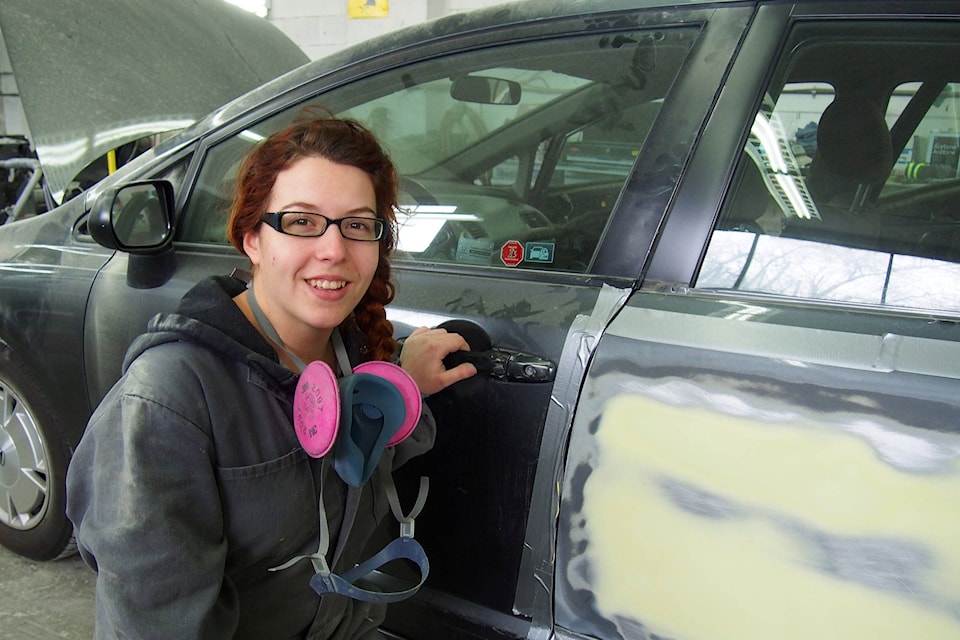MIKE YOUDS
Special to the News
She’s never met a female auto body technician, but Sarah LaRose is in the process of becoming one.
LaRose is four months into her apprenticeship as an auto body tech at Harbourview Collision, where most often these days she’s dismantling vehicle parts and prepping and sanding panels as part of the team. In fact, she’s their first female apprentice.
Why don’t more women enter the trade?
“I’m not actually sure,” LaRose said, pondering the question. “Maybe it’s more of an intimidating trade. I’ve heard that more women are going into mechanics, but I’ve never actually met a female auto body technician.”
That she happens to be the first auto body tech at Harbourview isn’t too surprising, since only about five percent of skilled trades workers in Canada are women. More women are entering training and apprenticeships, but the trades have been slower to change than most sectors of the labour market.
According to a recent provincial report, there are recognized reasons for that. Women who enter the trades have to be prepared to overcome certain barriers different from those of their male peers. They cite a lack of mentors and supportive networks.
“They described not being adequately prepared for the realities of working in a male-dominated industry,” states the report entitled Enhancing the Retention and Advancement of Women in the Trades in B.C.
Owing partly to her upbringing, Larose brings with her the advantage of being at home in a shop. Her father taught her to do oil changes and basic maintenance when she was young. Once she had the basics, she learned by doing her own repairs.
“My dad did a lot of his own mechanical work and when I got my licence I thought, ‘Well, I’m not going to pay anyone to do it.’ I’ve always really liked cars and trucks and four-by-fouring.”
She liked them enough to take the Alberni District Secondary School mechanics course five times: “There was just nothing else I really wanted to do other than be in a shop.”
After graduating from ADSS, Larose enrolled in the pre-mechanical course at North Island College, a 10-month, first-year course. She next worked at Jiffy Lube for two years, and would have continued in mechanics had there been more opportunities. When the Harbourview position came up, she applied online and got a call the first day. Evidently her resume stood out, no minor achievement at the age of 21.
Harbourview’s Denis Lavasseur was impressed by her attitude and experience, even though body work — a separate and distinct trade — was new to her.
“I’d never done anything like this other than in high school when I took a couple of shop classes,” she said. “I thought it would be really cool to learn, and it turns out I really like doing it and I’m learning a lot. It’s completely different.”
What’s the appeal? Body work, after all, is an exacting craft requiring considerable skill.
“I think it’s more hands on,” she said, describing herself as a “kinesthetic learner,” one who learns by doing.
If she clears the six-month mark at Harbourview, her apprenticeship continues with schooling in Vancouver in three six-week stints. In all, apprenticing is a three- or four-year commitment before she can qualify for her Red Seal for motor vehicle body repair. She’s found encouragement already, though.
“So far it’s been really good. I’ve met a lot of the customers whose vehicles I’ve worked on. They go, ‘That’s so cool you’re doing this.’ They’ve all been pretty positive.”
LaRose recommends young women take mechanics in high school as a foundation if they’re interested in pursuing automotive or auto body work. Her advice?
“Keep trying, never give up and always stay positive.”
